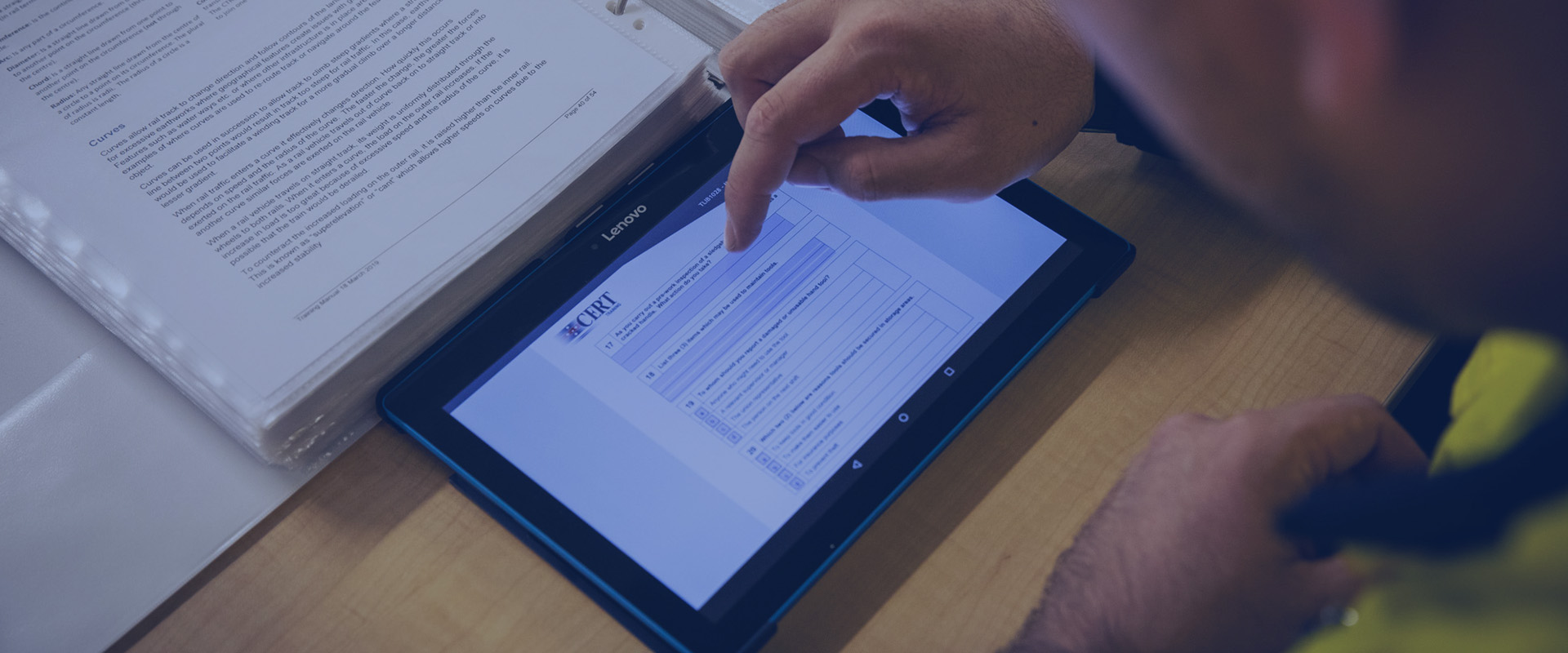
What medical do I need as a Rail Industry Worker?
The requirements and levels of rail medicals can be confusing. Whether you’re operating a locomotive or carrying out track maintenance, safety is always the top priority in the rail industry.
Securing employment within the rail industry and obtaining a Rail Industry Worker (RIW) card requires a particular type of medical, categorised according to the safety-critical rating of the role, by the National Standard for Health Assessment of Rail Safety Workers.
CERT offers Category 3 medical assessments on-site at our training centres, through our medical service provider, CMS (Company Medical Services). These medical assessments can be booked on-line as part of the below courses:
- RISI (SX52) in NSW (Accessing the rail corridor induction)
- TTSA in Victoria (Train track safety awareness)
- ARTC NTSA in South Australia (National track safety awareness)
- QR 3.2 in Queensland (Queensland Rail SARC and fatigue management).
Want to know more about rail medical assessments? Read on for an overview of the three key medical assessment categories requested within the rail sector.
Rail Medical (CATEGORY 1)
The highest level of medical certification, CATEGORY 1 applies to rail workers engaging in safety critical work. This includes important roles like conductors and shunters, where ill health or sudden incapacity could compromise public safety or result in a serious incident.
Areas of assessment include
- a K10 Questionnaire for Psychological Health,
- Alcohol AUDIT
- Questionnaire and Vision Assessment.
CATEGORY 1 assessments are valid at the time of commencement, then checked every five years up to the age of 50. As health can deteriorate with age, CATEGORY 1 assessments are checked every two years up to the age of 60, then every year thereafter.
Rail Medical (CATEGORY 2)
CATEGORY 2 applies to rail industry employees who carry out safety critical work that requires a high level of competency and attentiveness but would not jeopardise the safety of commuters or colleagues if they fell ill of were suddenly incapacitated. For example, signallers whose work is backed up by fail-safe, automated signal control systems often require a CATEGORY 2 rail medical.
Rail Medical (CATEGORY 3)
Applied to rail safety workers who engage in non-safety critical work, CATEGORY 3 medicals assess an individual’s ability to move through the rail corridor, work under supervision and seek out a safe place in the event of an emergency.
Areas of assessment include
- hearing,
- vision and
- mobility, as well as a
- drug and alcohol screen.
The CATAGORY 3 rail medical focuses on the individual safety of a rail industry worker, not that of commuters and colleagues.
Are you interested in furthering your career? Browse our range of courses online and open new doors within the rail industry.

